Web Architecture Illustrated
Dan Connolly
inspired by Ian Jacobs and Tim Berners-Lee, and others
see also: notes about these diagrams
A Web Resource
A URI identifies a resource, which has a representation.
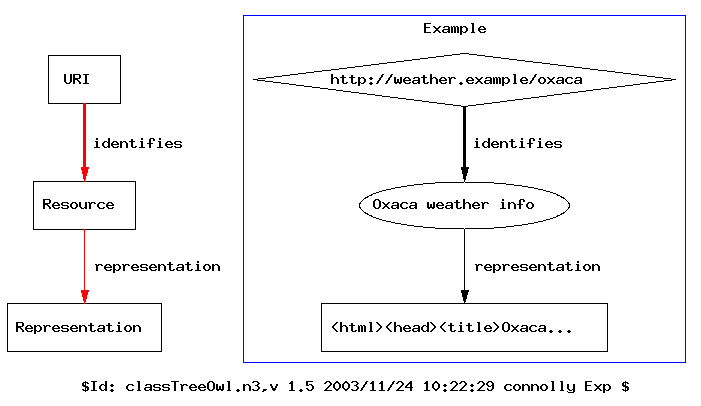
This is something of an idealization. We present a
refinement below, where consider each
Resource to be a mapping from protocol messages to actual
referents. Protocol messages act like interpretations (or
perhaps possible worlds) in this way.
Internet Media Types
The resource is represented in multiple data formats;
i.e. multiple Internt Media Types.
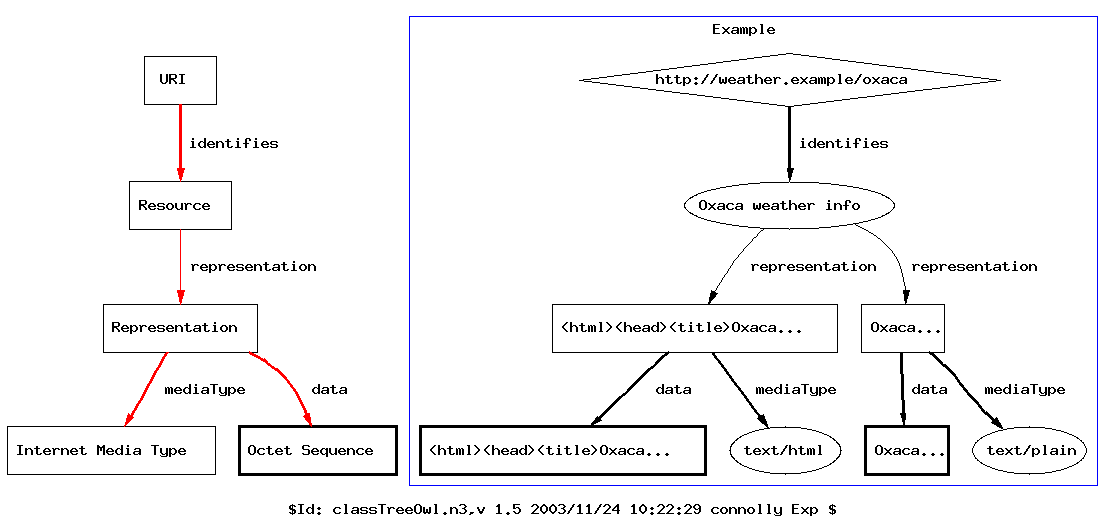
Fragment Identifiers
Each Internet Media Type tells how to evaluate a fragment
identifier as an expression with respect to the data of a
representation in that media type. For example, the HTML
specification says how to evaluate a fragment identifier given
an HTML document.
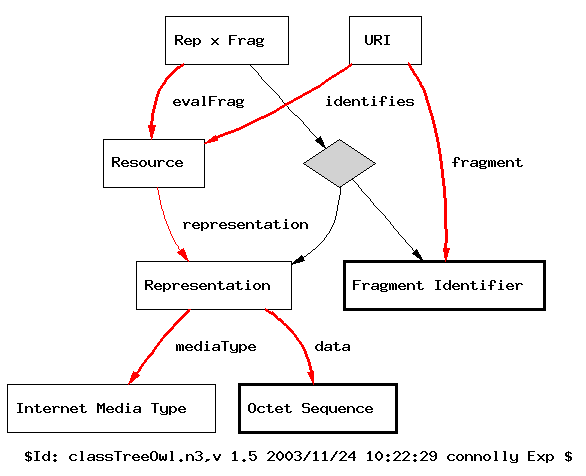
URI References
URI references facilitate exporting a self-referential group
of resources from a smaller context to a larger context.
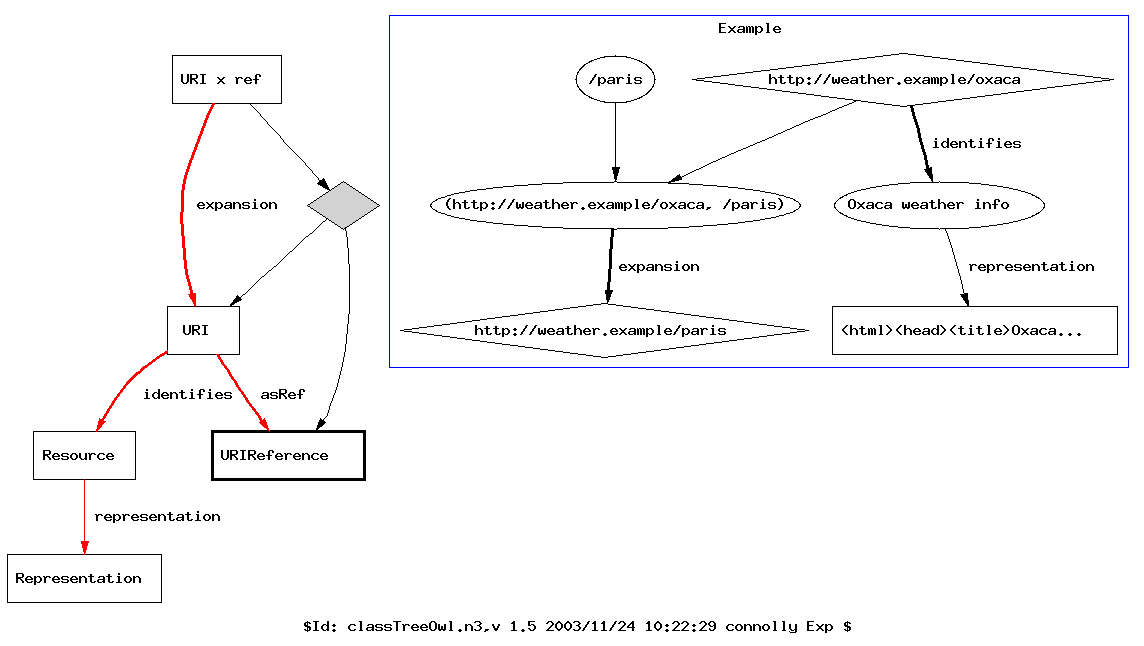
Communication Protocols
Representations are communicated between agents via messages
in communication protocols, e.g. HTTP.
Messages provide context in which to interpret URIs.
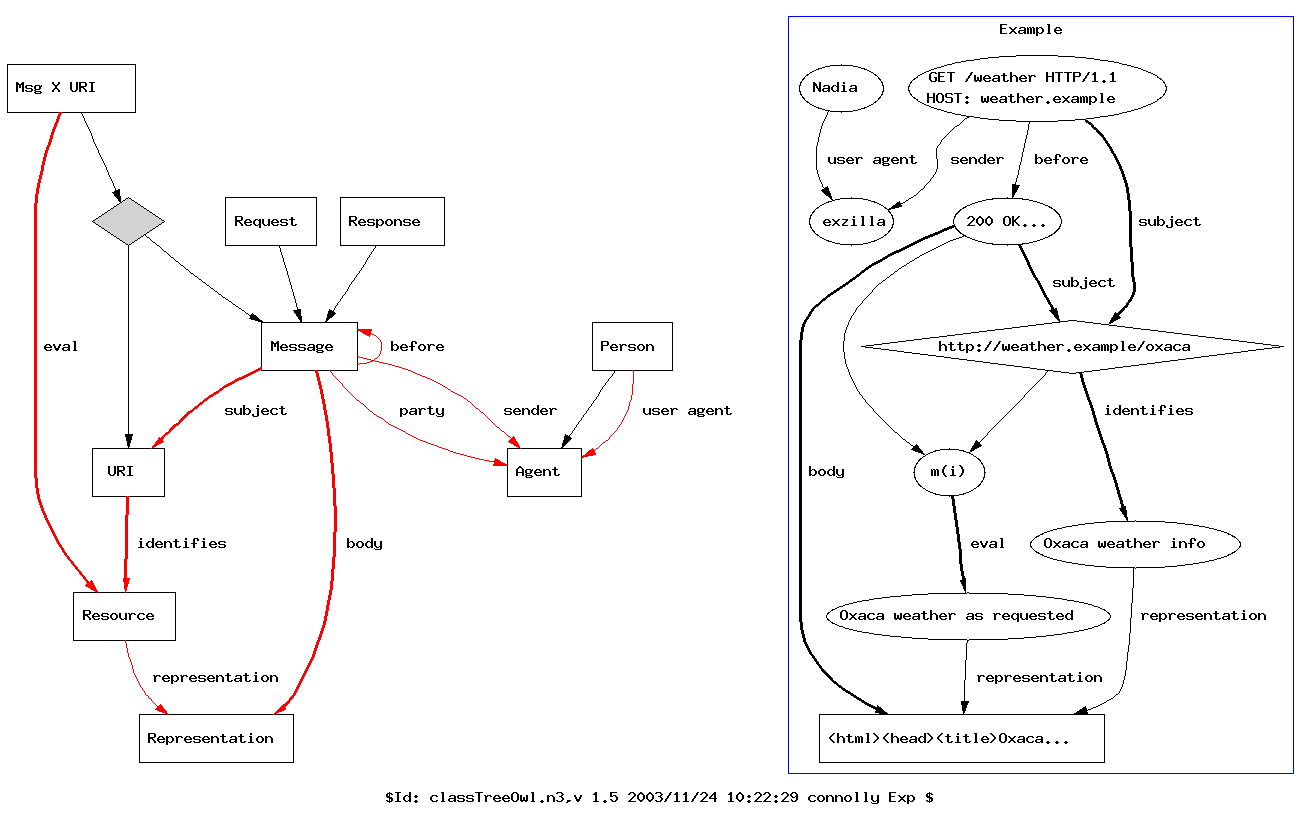
This RDF ontology connects my earlier work formalizing
HTTP caching in larch and various bits of research into logic
and protocols (e.g. Guha's thesis on contexts) with recent
www-tag sw-meaning discussions of the meaning of URIs as
referring expressions in data formats and formal
systems:
- represents(m, i, r)
- ?MSG cyc:ist { ?RES log:uri ?I; log:content ?REPR }.
- { ?MSG :body ?REP; :subject [ :identifies ?RES ] } =>
{ ?RES w:representation ?REP }.
?I :identifies ?RES. ?RES ?M ?REF.
- ?I :identifies ?RES. ?M :binding [ :arg ?RES; :value ?REF].




